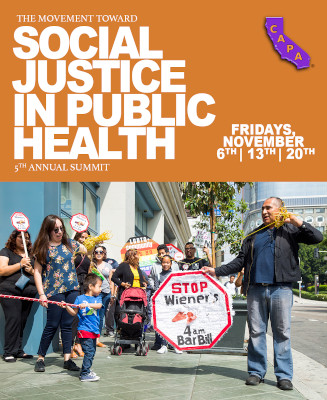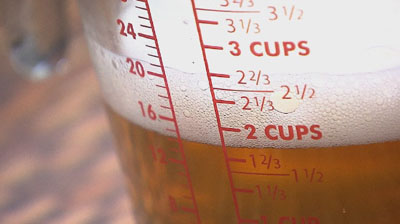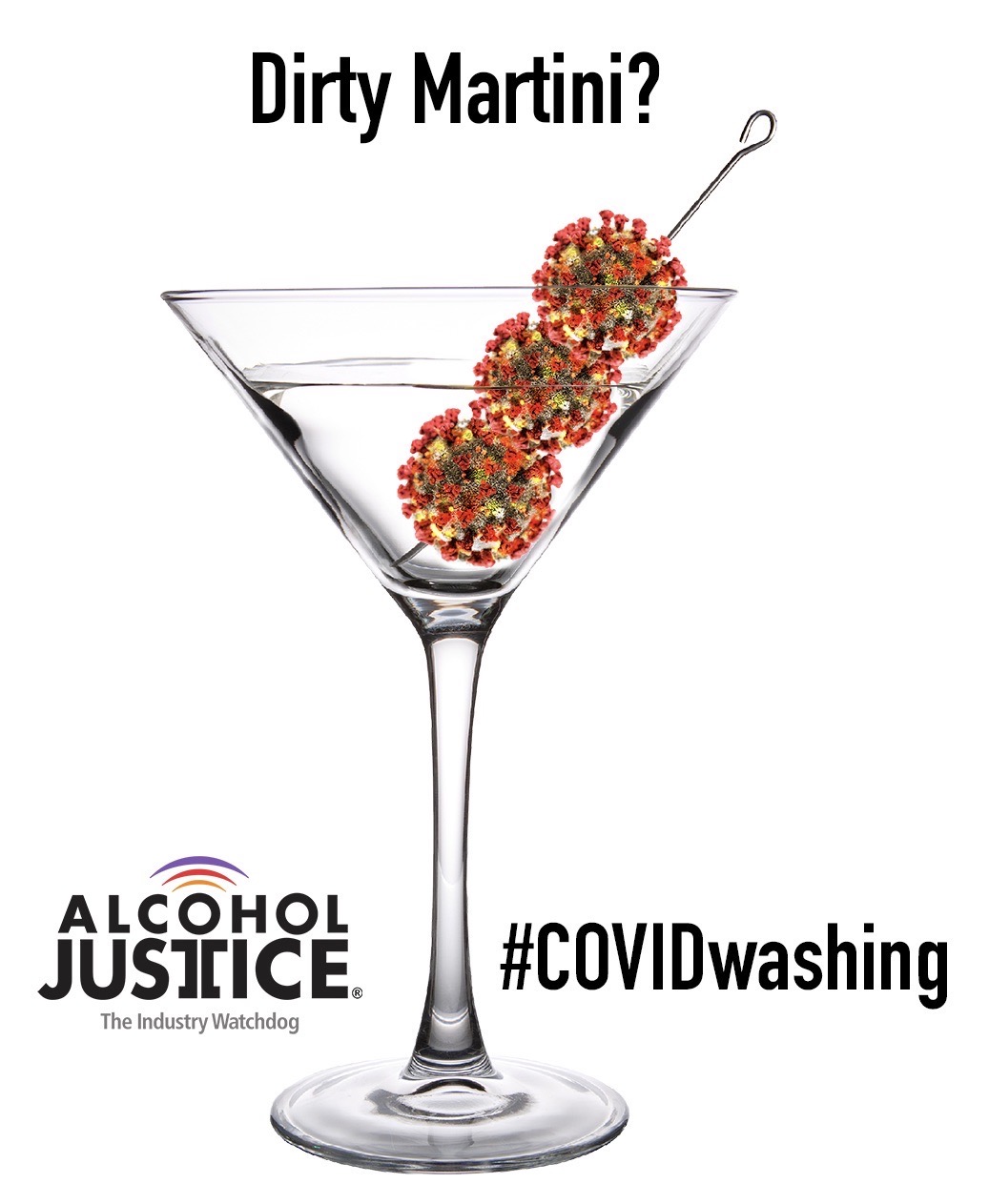Blog
Friday 11/20: LAST DAY of the CAPA Virtual Summit
 UPDATE: Over the past two Fridays, CAPA is proud to have brought together public health officials, community advocates, and representatives from across the spectrum of California experience. November 20, 2020, is the final day of the CAPA 2020 Virtual Summit. The final day boasts poets, power-building, and a celebration of the work we've all done to resist the power of Big Alcohol.
UPDATE: Over the past two Fridays, CAPA is proud to have brought together public health officials, community advocates, and representatives from across the spectrum of California experience. November 20, 2020, is the final day of the CAPA 2020 Virtual Summit. The final day boasts poets, power-building, and a celebration of the work we've all done to resist the power of Big Alcohol.VIDEO PREVIEW ♦ DAY 3 SCHEDULE ♦ REGISTER HERE
Alcohol harms are social justice issues. In 2020 we have seen vulnerability, oppression, and exploitation be the catalyst for powerful social justice movements. Public health has a role to play in these movements, and we cannot understand what that is without understanding the intersections of who we are, what we experience, and forces running through society. The fifth annual California Alcohol Policy Alliance (CAPA) Summit focuses on bringing together diverse voices to speak out against disproportionate harms and abuses perpetrated by Big Alcohol and consider innovative strategies for the future.
Government Cuts Safe Drinking Levels For Men In Half
 How much difference does a single drink make? Enough to save lives, according to preliminary dietary guidelines published by the United States Departments of Agriculture (USDA) and Health and Human Services (HHS). The guidelines take the small yet revolutionary step of lowering the recommended maximum drinks per day for men from two to one.
How much difference does a single drink make? Enough to save lives, according to preliminary dietary guidelines published by the United States Departments of Agriculture (USDA) and Health and Human Services (HHS). The guidelines take the small yet revolutionary step of lowering the recommended maximum drinks per day for men from two to one.
“The observational evidence base with respect to alcohol consumption is insufficient to recommend drinking at any level,” the team writes. In particular, they note problems with the research connecting two drinks a day for men to avoidance of cardiovascular outcomes, as well as a growing body of research connecting alcohol use to cancer risk. They cite recent studies that try to remove some of the bias in historical evaluations of alcohol risk, which, in aggregate, suggest men who drink 1 to 1.5 drinks a day are at less risk than those who adhered to the old standard of two.
“For decades we’ve taken flawed studies with easily identified sources of bias,” said Carson Benowitz-Fredericks, MSPH, research manager for Alcohol Justice, “and made firm conclusions based on them. What we’re seeing now is hardly a revolution, it’s just the government catching up with the state of the science.”
While the reduction in recommended drinks per day seemed nominal, it has raised the ire of the alcohol industry. Speaking to the Santa Rosa Press-Democrat, Rob McMillan, executive vice president of Silicon Valley Bank’s wine division, lamented that the guidelines were “one more piece of ammunition to those who are anti-alcohol.” In the same article, R. Curtis Ellison, M.D., a researcher with a history of receiving alcohol industry funding, invoked the Trump Administration’s signature dismissal of unfavorable reports, calling the report “fake news.”
This is a remarkable turnabout for an industry accustomed to finding HHS amenable to its interests. As recently as 2018, Anheuser-Busch InBev had convinced the National Institutes of Alcohol Abuse and Alcoholism to allow them to fund a trial on the “health benefits” of alcohol consumption. The trial, called MACH-15, was led by a researcher who cleared every step of the protocol with representatives of the mega-brewer, and who promised them that the results could be used to convince doctors to prescribe.
“The alcohol industry took for granted that they had federal consultants under their thumb,” said Michael Scippa, public relations director for Alcohol Justice, “and they’re going to try and fight this. We need to be louder, and send a message to Washington that these revised guidelines are smart, scientific, and long overdue.”
The comment period for the revised guidelines stays open until Augst 13, 2020. Alcohol Justice strongly supports these guidelines.
TAKE ACTION to voice support for lowering the safe alcohol consumption levels.
READ MORE about corruption in government alcohol research
READ MORE about the myth of healthy drinking.
READ MORE about Big Alcohol’s French Paradox fraud.
More Red Flags In Regulatory Relief
 In response to the ongoing COVID-19 pandemic, the California Department of Alcoholic Beverage Control (ABC) has been relaxing alcohol regulations in California. Alcohol Justice finds this strategy concerning for public health, both in terms of encouraging excessive drinking and in terms of increasing alcohol-related susceptibility to the coronavirus. Despite our concerns, ABC has continued to issue these reliefs without asking for input from community or public health advocates. Below is Alcohol Justice's attempt to push back against the newest wave of industry-friendly deregulation. Our first response letter is archived here.
In response to the ongoing COVID-19 pandemic, the California Department of Alcoholic Beverage Control (ABC) has been relaxing alcohol regulations in California. Alcohol Justice finds this strategy concerning for public health, both in terms of encouraging excessive drinking and in terms of increasing alcohol-related susceptibility to the coronavirus. Despite our concerns, ABC has continued to issue these reliefs without asking for input from community or public health advocates. Below is Alcohol Justice's attempt to push back against the newest wave of industry-friendly deregulation. Our first response letter is archived here.
June 8, 2020
Jacob Appelsmith, Director
California Department of Alcoholic Beverage Control
3927 Lennane Drive, Suite 100
Sacramento, CA 95834
Re: Alcohol Justice response to Notices of Regulatory Relief 3, 4 and 5
Dear Director Appelsmith,
BREAKING: Watchdogging Emergency Alcohol Deregulation
 In response to the ongoing COVID-19 crisis, California Department of Alcoholic Beverage Control relaxed many of the longstanding rules constraining alcohol licensees. On Monday, April 14, Alcohol Justice Executive Director/CEO Bruce Lee Livingston delivered the following critique to ABC.
In response to the ongoing COVID-19 crisis, California Department of Alcoholic Beverage Control relaxed many of the longstanding rules constraining alcohol licensees. On Monday, April 14, Alcohol Justice Executive Director/CEO Bruce Lee Livingston delivered the following critique to ABC. For the press release, click here.
For Spanish, click here (letter) or here (press release).
Dear Director Appelsmith,
We are writing in response to the regulatory relief for California alcohol licensees in response to the COVID-19 outbreak. We understand that this is an extraordinary time, and that the relief is intended to protect residents’ livelihoods and the tens of thousands of reputable alcohol licensees. Nonetheless, as an alcohol industry watchdog, we feel obligated to call attention to red flags and missed opportunities in the emergency response.
More Articles ...
Help us hold Big Alcohol accountable for the harm its products cause.
| GET ACTION ALERTS AND eNEWS |
STAY CONNECTED    |
CONTACT US 24 Belvedere St. San Rafael, CA 94901 415-456-5692 |
SUPPORT US Terms of Service & Privacy Policy |


